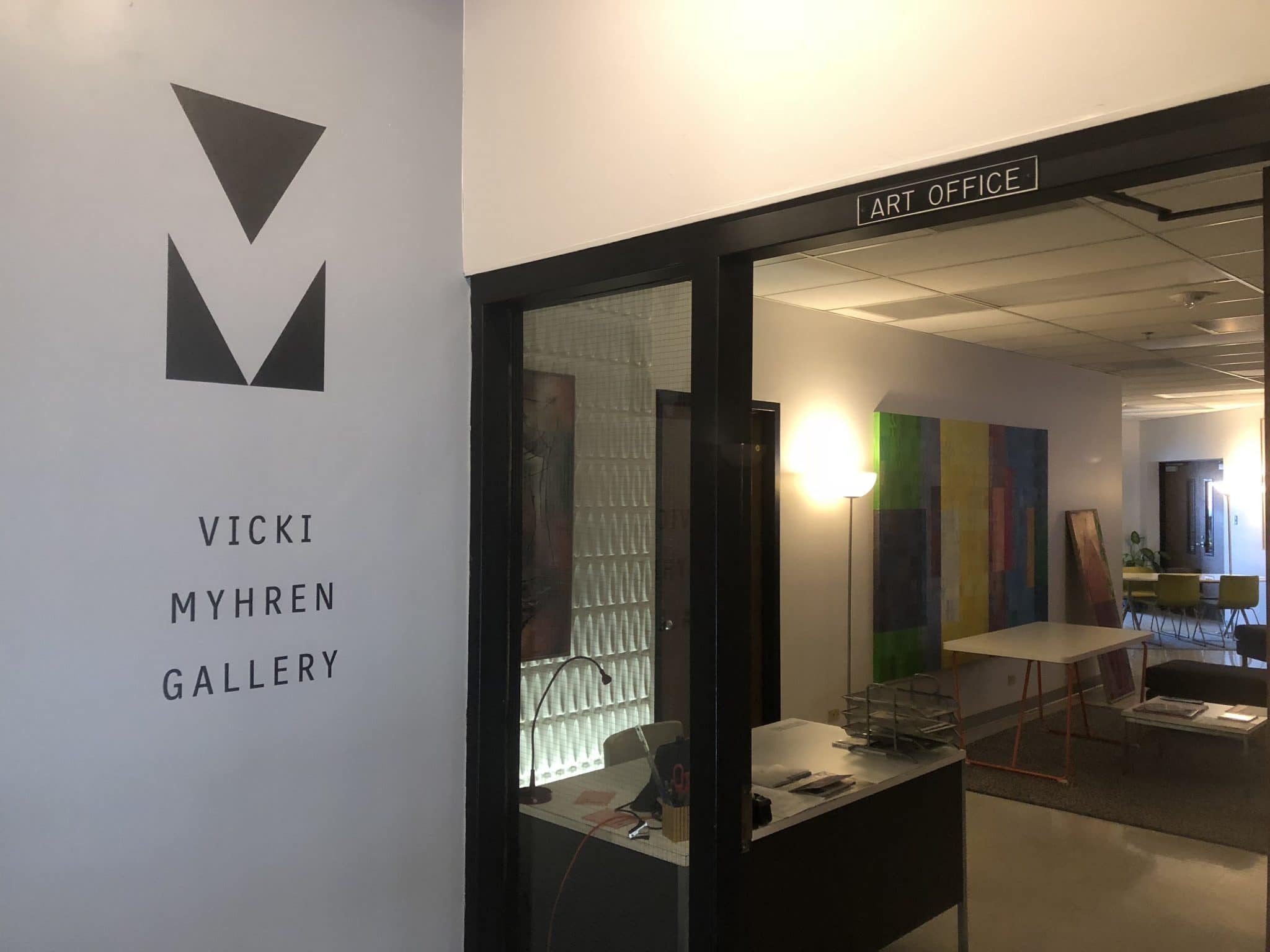If you’re pursuing, or looking to pursue an art degree, the question of, ‘what do you plan to do with that?’ is commonplace. While of course, the goal is usually to become some type of artist, the reality of what an artist actually does can be very broad. From printmakers to painters, graphic designers to art therapists, an art student does not have a straight and narrow path laid ahead. The path is more fluid and creative–which fits the format of art itself.
We talked to Jason Kellermeyer, the Academic Program Coordinator of the University of Denver School of Art, as well as graduates that took their degree in different directions, to help you understand where you can take your art degree and how to be proactive about reaching your artistic career goals.
What are your options?

First, let’s look at the facts. The Strategic National Arts Alumni Project surveys arts alumni to acquire data on former art students. The survey included data from 92,113 arts alumni in 2011, 2012, and 2013. Seventy percent of respondents are currently working within the arts. The top five most common occupations of art majors that are currently working within the arts include arts educators, designers, fine artists, musicians, and writers/authors/editors. The top five most common occupations of art majors that are currently working outside of the arts work in the following fields: education/training/library, communications, management, office/administrative support, and sales.
Of course, all this can depend on what your interests are and what your education background entailed. For example, Kellermeyer explained that DU’s art program focuses on fine art over commercial art, and that many students double major or have another concentration to round out their liberal arts degree. A common route these students take is to combine psychology and art to become an art therapist. Some art schools are more traditional and focus strictly on art, while others specialize in emerging digital practices and cover the digital design aspect of art. Kellermeyer described the routes his students tend to take.
“The students, they work for galleries, nonprofits, and [other] creative fields like marketing or communications,” said Kellermeyer. “For an employer, that they graduated from college and they think outside the box is more important. On the art side, they either jump into something right away or they prep to go to grad school.”
Art alumna Sara Rubel is a graphic designer at CBRE. She described the majority of her peers as becoming art makers, printmakers, and painters. Another art alum, Nicholas Ward, followed the more traditional path.
Since graduating with a studio art degree, Ward said, “I’ve been creating, applying to call for artists, showing in galleries, and selling my artwork. To be clear, I work part time at a coffee shop to help support myself, but am working, saving money, and on track to be spending all of next year pursuing art full-time.”
Kellermeyer also recalled students who had gone on to become involved in advertising firms, marketing communications, interior design, and app development when going after commercial art, while unique post-grad positions included registrars for art collections, tattoo artistry, and even a pop-up coffee and art truck business.
“I think, because of the arts, there’s no right answer. They do tend to follow their bliss,” said Kellermeyer.
What are the important skills you acquire in art school?
Kellermeyer explained that the art program follows a two-tiered system in terms from a foundation program, which all art schools roughly follow. This is the foundations of the basic principles of art, meaning understanding line form and volume, balance, proportions, etc. After these core principles are established, students are asked to respond to concepts or ideas, similar to an essay prompt, in some form of art. Kellermeyer calls this “creative problem solving,” and describes it as “the most universally and widely usable concept of the art school.”
He said that these skills acquired can be broadly applied, and that art students have “a knack for solving problems. That’s the fundamental skill that you get out of studying art as an undergrad is creative problem solving. It’s all process based.”
How these skills apply to artmaking is obvious, as they are creating traditional art in the form of paintings, sculptures, and other modes. Yet, in the corporate world, the skills are applied differently.
Rubel explained that the most important skills she learned in school were “learning how to be creative and learning what makes something innovative. Having peer critiques and having people tell you, there’s something you can do better, is definitely something that is consistently part of my job and career now.”
While everyone’s job inevitably has to make them money in order to be successful, these design-focused, commercial type jobs in the creative field are more geared towards producing work for an economical end by selling a product or promoting an idea. This is a more nuanced form of traditional art, which is a more personal expression. However, these creative commercial jobs are a growing field in today’s world.
“There’s a lot out there and there’s been an increase in just [having platforms] to produce things. We live in a digital world that’s content driven, so students latch onto that,” said Kellermeyer.
Starting your career in college and beyond
To be an artist of any kind, you have to market yourself and often be an entrepreneur. Kellermeyer pointed out that there are many similarities between art students and business students that people don’t realize.
“The students that are going to try to make it as artists are very similar in a mindset to the students that go to the [Daniel’s College of Business at DU] and say, ‘I’m going to make it as an entrepreneur,’ because it’s all on them. They’re going to try to find that thing in the world that supports them,” said Kellermeyer.
This includes both putting yourself and your work out there, as well as honing in on skills you’re going to need for your chosen field. Rubel said she found ways to implement graphic design and usage of Adobe Creative Cloud into her classes as much as possible to strengthen her field-specific knowledge.
“It’s definitely not a clear path from an art degree to where I am now. The most important thing I learned is that if I had more intern opportunities in college to do exactly what I wanted to pursue I probably would be further in my career now,” said Rubel. “I think the only reason I am where I am in my career now is just because I did contract work for different businesses for two years after college doing graphic design and that’s really where I gained most of my experience in the Creative Suite.”
Rubel explained that an art degree, much like other creative majors, gives you the foundation while you are responsible for specializing in your desired career by taking opportunities to deepen your education.
“If you’re pursuing a degree in studio art and you want to be more in the corporate world, it’s not necessarily just a skip, hop, and leap–you have to get that tangible experience along the way,” said Rubel.
As for self-promoted art, it’s easier now to get your work out there with established online galleries and social media. You can easily create a social media account to promote your art for free before you even graduate college.
“There’s no reason not to do that right now,” said Kellermeyer in reference to growing an online platform, “it’s easier now for someone to grow a traditional following, people that are interested in their work, and they’ll grow as artists over time.”
It also helps to have a mentor to guide you through the nuanced world of art. Some schools will connect you to a mentor, but Ward explains, he “just got lucky.”
“The art world is complicated and it seems most art programs just throw you out there to figure it out on your own. I’ve worked hard to be where I am now, but I wouldn’t be where I am at without the support of a previous art instructor of mine,” said Ward.
Art itself has morphed to include many new avenues in the digital age. While there are still painters, sculptors, and printmakers, there is also a plethora of other fields that benefit from an art background but focus on technology, design, or blend art with another field. While making a living as an artist has a negative stereotype, there are more ways than ever to make it as an artist either independently, through partnerships, or even in the corporate world. Find what aspect of art interests you, and you can find an appropriately suited creative career.
Want more help choosing a college major? Read: Making the College Transition




